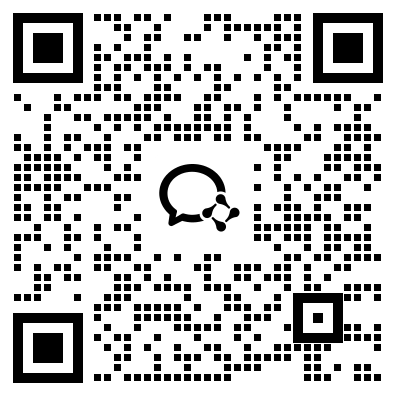考研201英语(一)在线题库每日一练(三百八十五)
摘要:以下是希赛网给大家分享考研201英语(一)在线题库每日一练,希望通过刷题可以帮助大家巩固重要知识点,对知识点查漏补缺,祝愿大家能顺利通过考试!
本文提供考研201英语(一)在线题库每日一练,以下为具体内容
1、Today we live in a world where GPS systems, digital maps, and other navigation apps are available on our smart phones. _1_ of us just walk straight into the woods without a phone. But phones _2_ on batteries, and batteries can die faster than we realize. _3_ you get lost without a phone or a compass, and you _4_ can’t find north, a few tricks to help you navigate _5_ to civilization, one of which is to follow the land. When you find yourself well _6_ a trail, but not in a completely _7_ area, you have to answer two questions: Which _8_ is downhill, in this particular area? And where is the nearest water source? Humans overwhelmingly live in valleys, and on supplies of fresh water. _9_, if you head downhill, and follow any H2O you find, you should _10_ see signs of people. If you’ve explored the area before, keep an eye out for familiar sights—you may be _11_ how quickly identifying a distinctive rock or tree can restore your bearings. Another _12_: Climb high and look for signs of human habitation. _13_, even in dense forest, you should be able to _14_ gaps in the tree line due to roads, train tracks, and other paths people carve _15_ the woods. Head toward these _16_ to find a way out. At night, scan the horizon for _17_ light sources, such as fires and streetlights, then walk toward the glow of light pollution. _18_, assuming you’re lost in an area humans tend to frequent, look for the _19_ we leave on the landscape. Trail blazes, tire tracks, and other features can _20_ you to civilization.
问题1
A、 Few
B、 More
C、 Some
D、 All
问题2
A、 put
B、 take
C、 run
D、 come
问题3
A、 Since
B、 Until
C、 Though
D、 If
问题4
A、 formally
B、 literally
C、 gradually
D、 relatively
问题5
A、 around
B、 away
C、 back
D、 next
问题6
A、 onto
B、 along
C、 across
D、 off
问题7
A、 unattractive
B、 unfamiliar
C、 unchanged
D、 uncrowded
问题8
A、 way
B、 point
C、 site
D、 place
问题9
A、 Instead
B、 Yet
C、 So
D、 Besides
问题10
A、 immediately
B、 eventually
C、 unexpectedly
D、 intentionally
问题11
A、 frightened
B、 annoyed
C、 surprised
D、 confused
问题12
A、 problem
B、 result
C、 view
D、 option
问题13
A、 Above all
B、 For example
C、 On average
D、 In contrast
问题14
A、 spot
B、 avoid
C、 bridge
D、 separate
问题15
A、 from
B、 under
C、 beyond
D、 through
问题16
A、 posts
B、 breaks
C、 shades
D、 links
问题17
A、 hidden
B、 mysterious
C、 artificial
D、 limited
问题18
A、 Finally
B、 Consequently
C、 Incidentally
D、 Generally
问题19
A、 memories
B、 belongings
C、 notes
D、 marks
问题20
A、 lead
B、 adapt
C、 restrict
D、 expose
2、The Earth’s daily clock, measured in a single revolution, is twenty-four hours. The human clock, 1, is actually about twenty-five hours. That’s 2 scientists who study sleep have determined from human subjects who live for several weeks in observation chambers with no 3 of day or night. Sleep researchers have 4 other surprising discoveries as well.We spend about one-third of our lives asleep, a fact that suggests sleeping. 5 eating and breathing, is fundamental life process. Yet some people almost never sleep, getting by on as 6 as fifteen minutes a day. And more than seventy years of 7 into sleep deprivation, in which people have been kept 8 for three to ten days, has yielded only one certain findings: Sleep loss makes a person sleepy and that’s about all; it causes no lasting ill 9. Too much sleep, however, may be 10 for you.These findings 11 some long-held views of sleep, and they raise questions about its fundamental purpose in our lives. In 12, scientists don’t know just why sleep is necessary.“We get sleepy, and when we sleep, that sleepiness is reversed,” Dr. Howard Roffwarg of the University of Texas in Dallas explains. “We know sleep has a function, 13 we feel it has a function. We can’t put our finger on it, but it must, 14 in some way, direct or indirect, have to do with rest and restitution.”Other scientists think sleep is more the result of evolutionary habit than 15 actual need. Animals sleep for some parts of the day perhaps because it is the 16 thing for them to do: it keeps them 17 and hidden from predators; it’s a survival tactic. Before the advent of electricity, humans had to spend at least some of each day in 18 and had little reason to question the reason or need for 19 But the development of the electroencephalograph and the resulting discovery in 1937 of dramatic 20 in brain activity between sleep and wakefulness opened the way for scientific inquiry in the subject.
问题1
A、however
B、furthermore
C、likewise
D、therefore
问题2
A、the
B、what
C、because
D、many
问题3
A、idea
B、feeling
C、sense
D、judgment
问题4
A、come up against
B、come down to
C、come up with
D、come up to
问题5
A、with
B、like
C、unlike
D、as
问题6
A、little
B、much
C、few
D、long
问题7
A、probe
B、investigation
C、research
D、examination
问题8
A、asleep
B、sleepy
C、active
D、awake
问题9
A、effects
B、affections
C、affects
D、impacts
问题10
A、useful
B、good
C、bad
D、harmful
问题11
A、challenge
B、deny
C、doubt
D、dispute
问题12
A、addition
B、fact
C、line
D、short
问题13
A、if
B、because
C、like
D、provided
问题14
A、at least
B、at most
C、at best
D、at worst
问题15
A、from
B、an
C、the
D、of
问题16
A、worst
B、best
C、only
D、natural
问题17
A、comfortable
B、calm
C、quiet
D、excited
问题18
A、coldness
B、warmth
C、darkness
D、shade
问题19
A、sleep
B、work
C、food
D、clothes
问题20
A、differences
B、similarities
C、resemblance
D、opposites
3、budget
A、 n. 律师;代理人
B、 adj. 价格低廉的;花钱少的;v. 谨慎花钱,把…编入预算;n. 预算
C、 n. 重要人物;平常人
D、 v. 吸引,使喜爱,引起……的好感;招引;引起(反应);吸引
4、Text 2 ①Last year marked the third year in a row of when Indonesia’s bleak rate of deforestation has slowed in pace. ②One reason for the turnaround may be the country’s antipoverty program. ①In 2007, Indonesia started phasing in a program that gives money to its poorest residents under certain conditions, such as requiring people to keep kids in school or get regular medical care. ②Called conditional cash transfers or CCTs, these social assistance programs are designed to reduce inequality and break the cycle of poverty. ③They’re already used in dozens of countries worldwide. ④In Indonesia, the program has provided enough food and medicine to substantially reduce severe growth problems among children. ①But CCT programs don’t generally consider effects on the environment. ②In fact, poverty alleviation and environmental protection are often viewed as conflicting goals, says Paul Ferraro, an economist at Johns Hopkins University. ①That’s because economic growth can be correlated with environmental degradation, while protecting the environment is sometimes correlated with greater poverty.②However, those correlations don’t prove cause and effect. ③The only previous study analyzing causality, based on an area in Mexico that had instituted CCTs, supported the traditional view.④There, as people got more money, some of them may have more cleared land for cattle to raise for meat, Ferraro says. ①Such programs do not have to negatively affect the environment, though.② Ferraro wanted to see if Indonesia’s poverty-alleviation program was affecting deforestation. ③Indonesia has the third-largest area of tropical forest in the world and one of the highest deforestation rates. ①Ferraro analyzed satellite data showing annual forest loss from 2008 to 2012—including during Indonesia’s phase-in of the antipoverty program—in 7,468 forested villages across 15 provinces.② “We see that the program is associated with a 30 percent reduction in deforestation,” Ferraro says. ①That’s likely because the rural poor are using the money as makeshift insurance policies against inclement weather, Ferraro says. ②Typically, if rains are delayed, people may clear land to plant more rice to supplement their harvests. ① Whether this research translates elsewhere is anybody’s guess. ②Ferraro suggests the results may transfer to other parts of Asia, due to commonalities such as the importance of growing rice and market access.③And regardless of transferability, the study shows that what's good for people may also be good for the environment. ④Even if this program didn’t reduce poverty, Ferraro says, "the value of the avoided deforestation just for carbon dioxide emissions alone is more than the program costs. " 1、According to the first two paragraphs, CCT programs aim to______. 2、The study based on an area in Mexico is cited to show that ______ . 3、In his study about Indonesia, Ferraro intends to find out ______ . 4、According to Ferraro, the CCT program in Indonesia is most valuable in that ______ . 5、What is the text centered on?
问题1
A、facilitate healthcare reform
B、help poor families get better off
C、improve local education systems
D、lower deforestation rates
问题2
A、cattle raising has been a major means of livelihood for the poor
B、CCT programs have helped preserve traditional lifestyles
C、antipoverty efforts require the participation of local farmers
D、economic growth tends to cause environmental degradation
问题3
A、its acceptance level of CCTs
B、its annual rate of poverty alleviation
C、the relation of CCTs to its forest loss
D、the role of its forests in climate change
问题4
A、it will benefit other Asian countries
B、it will reduce regional inequality
C、it can protect the environment
D、it can benefit grain production
问题5
A、The effects of a program.
B、The debates over a program.
C、The process of a study.
D、The transferability of a study.
5、Habits are a funny thing. We reach for them mindlessly, setting our brains on auto-pilot and relaxing into the unconscious comfort of familiar routine. “Not choice, but habit rules the unreflecting herd,” William Wordsworth said in the 19th century. In the ever-changing 21st century, even the word “habit” carries a negative connotation. So it seems antithetical to talk about habits in the same context as creativity and innovation. But brain researchers have discovered that when we consciously develop new habits, we create parallel synaptic paths, and even entirely new brain cells, that can jump our trains of thought onto new, innovative tracks. But don’t bother trying to kill off old habits; once those ruts of procedure are worn into the hippocampus, they’re there to stay. Instead, the new habits we deliberately ingrain into ourselves create parallel pathways that can bypass those old roads. “The first thing needed for innovation is a fascination with wonder,” says Dawna Markova, author of “The Open Mind” and an executive change consultant for Professional Thinking Partners. “But we are taught instead to ‘decide,’ just as our president calls himself ‘the Decider.’ ” She adds, however, that “to decide is to kill off all possibilities but one. A good innovational thinker is always exploring the many other possibilities.” All of us work through problems in ways of which we’re unaware, she says. Researchers in the late 1960 covered that humans are born with the capacity to approach challenges in four primary ways: analytically, procedurally, relationally (or collaboratively) and innovatively. At puberty, however, the brain shuts down half of that capacity, preserving only those modes of thought that have seemed most valuable during the first decade or so of life. The current emphasis on standardized testing highlights analysis and procedure, meaning that few of us inherently use our innovative and collaborative modes of thought. “This breaks the major rule in the American belief system — that anyone can do anything,” explains M. J. Ryan, author of the 2006 book “This Year I Will...” and Ms. Markova’s business partner. “That’s a lie that we have perpetuated, and it fosters commonness. Knowing what you’re good at and doing even more of it creates excellence.” This is where developing new habits comes in.1、The view of Wordsworth habit is claimed by being _____2、The researchers have discovered that the formation of habit can be _____.3、“ruts”(in line one, paragraph 3) has closest meaning to _____.4、Ms. Markova most probably agree that _____.5、Ryan’s comments suggest that the practice of standard testing _____.
问题1
A、casual
B、familiar
C、mechanical
D、changeable.
问题2
A、predicted
B、regulated
C、traced
D、guided
问题3
A、tracks
B、series
C、characteristics
D、connections
问题4
A、ideas are born of a relaxing mind
B、innovativeness could be taught
C、decisiveness derives from fantastic ideas
D、curiosity activates creative minds
问题5
A、prevents new habits form being formed
B、no longer emphasizes commonness
C、maintains the inherent American thinking model
D、complies with the American belief system
延伸阅读
- 历年考研国家分数线汇总(更新至2025年)
- 2025考研国家分数线正式发布
- 2025全国各省考研初试成绩公布时间汇总(更新中)
- 2025年考研成绩公布时间及查询流程
- 2025年全国硕士研究生招生考试(初试)温馨提示汇总
- 2025年全国硕士研究生招生考试考场规则

考研微信公众号

考研备考资料免费领取
去领取
- 1
- 1
- 8
 专注在线职业教育24年
专注在线职业教育24年









 扫描二维码
扫描二维码
 扫描二维码
扫描二维码








